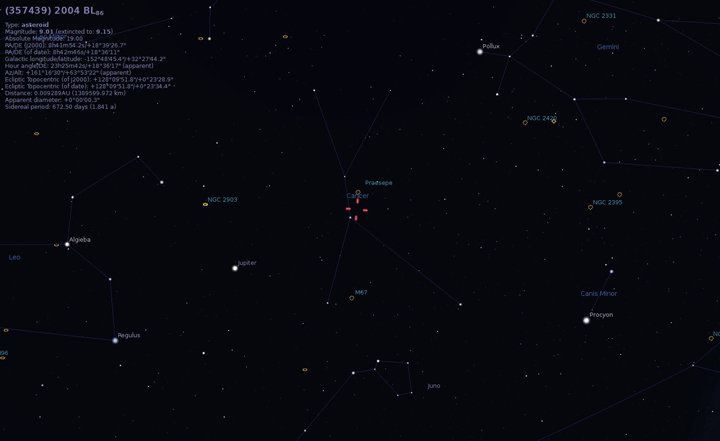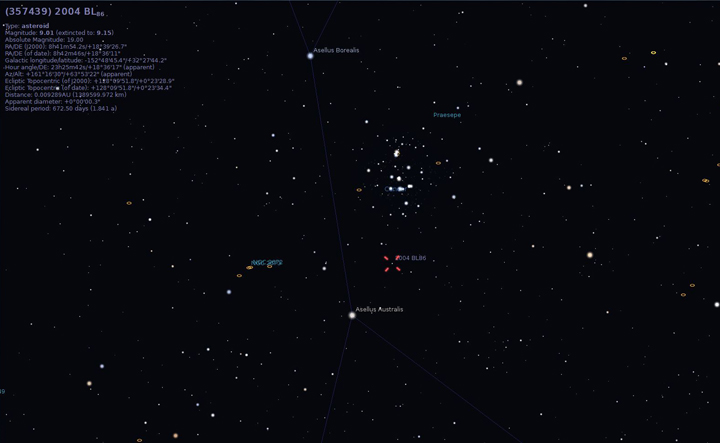WATCH: Eric Sorensen explains how you can see Asteroid 2004 BL86 for yourself.
TORONTO – Earth is being buzzed by another asteroid, but don’t worry: there’s no threat to us.

Asteroid 2004 BL86 will pass by us about three times the distance of Earth to the moon on Jan. 26 around 11:20 a.m. (EST), about 1.2 million kilometres. It’s estimated that the asteroid is about half a kilometre in size and is travelling roughly 56,000 km/h. It won’t make a return for another 200 years.
This is the closest pass by any known asteroid until asteroid 1999 AN10 flies by in 2027 (there’s no way to know if astronomers will discover anything else between now and then, though).
READ MORE: Doomsday asteroids: Here we go again
As usual, astronomers are taking advantage of the close flyby to study it.
“While it poses no threat to Earth for the foreseeable future, it’s a relatively close approach by a relatively large asteroid, so it provides us a unique opportunity to observe and learn more,” said Don Yeomans, manager of NASA’s Near Earth Object Program at the Jet Propulsion Laboratory.
If you have a small telescope (about 4 inches) or a large pair of binoculars (15×70 and larger) you can see it for yourself. As usual, the view is better from a dark location. If you’re using binoculars, it’s best to put them on a tripod to get a steady view.
The asteroid will actually be moving quite fast, about 2 degrees an hour (one degree is the width of your pinky held up at arm’s length). This may not seem very fast, but in terms of asteroid movement, it is. Over a few hours you will be able to see it move across the field of stars.
So where to find it?
The asteroid will be passing through the constellation Cancer (here’s a link to a handy map someone made).
PHOTO GALLERY: Where to find Asteroid 2004 BL86
The best way to see it move will be to compare to nearby stars. Grab your binoculars, take a look, make note of nearby stars and then return about an hour or so later and look in the same place. You will definitely notice that it has moved.
If you don’t have a telescope or a pair of large binoculars, you can watch it live online at the The Virtual Telescope Project or at Slooh.





Comments